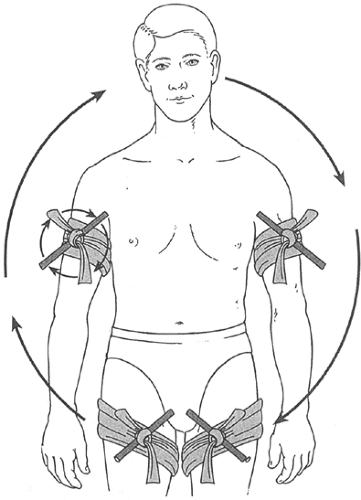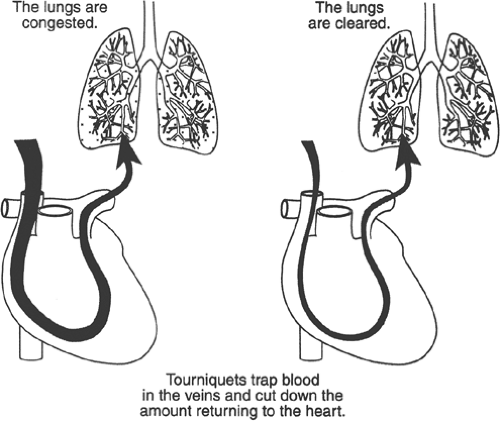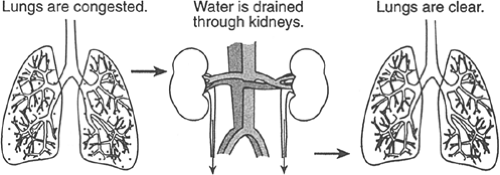Medical Treatment of Heart Failure
This chapter is included here for a good reason. By now the reader should understand what happens when the pumping action of the heart fails. The difference between left heart failure and right heart failure should be clear. The diseases that produce heart failure have been listed and described—hypertension, coronary artery disease, valvular heart disease, disease of the heart muscle, congenital heart disease, chronic lung disease. Now it’s time to answer the next question: “What do we do about it?”
Logical answer: “Treat the cause. Remove the cause and prevent the heart failure.” Logical answer…to a point. Removal of the cause is possible some of the time, but not always. We can control hypertension, we can offset some of the effects of coronary artery disease on heart muscle, we can put in artificial valves or reconstruct some diseased ones, we can repair most types of congenital heart disease. That still leaves some conditions we can’t prevent. There are other conditions that could be prevented but often aren’t—for instance, hypertensive heart disease when there’s poor management or poor cooperation by a patient.
There’s really no way of completely preventing coronary artery disease. Even though we can lower the risk, many people are going to lose a critical mass of their left ventricle each year as a result of coronary artery disease. They’ll go into congestive failure.
Nobody knows how to prevent myocarditis or myocardiopathy. In most cases, nobody has any idea of the cause.
Sometimes diseased valves aren’t detected in time and the heart degenerates past the point of no return.
As long as people pursue activities that are injurious to the heart and lungs, cor pulmonale is going to cripple and kill thousands. In other words, we have to expect heart failure and be ready to treat it.
There are four types of heart failure. It may sound complicated, but the types are usually easy to recognize and differentiate.
Acute Left Heart Failure
There’s too much blood in the lungs. It has piled up in the lungs fairly rapidly because the left ventricle isn’t pumping the blood out of the lungs as fast as the right ventricle is pumping it in. The lungs are congested with watery fluid and the patient can’t get enough oxygen into the blood. The extra fluid may pile up in the tissue spaces around the air passages, or it may actually fill the alveoli (pulmonary edema).
Treatment
Rotating Tourniquets
There’s a quick, safe treatment for acute left heart failure that’s simple and absolutely free. It doesn’t involve pills or shots and no drug company is pushing it for profit. Naturally, the medical profession ignores it.
Remember, the lungs are clogged with fluid so the first thing you want to do is cut down the volume of blood returning to the lungs. Here’s a way to do that, but… it’s so simple that whole generations of physicians have forgotten it!
The quickest, safest way to cut down the volume of blood returning to the lungs is to put tourniquets on all four extremities, as high up as possible, and tighten them enough to cut off the veins. Now the blood flows out through the arteries, but a great deal of it is trapped in the large reservoirs of veins in the limbs and can’t flow back to the lungs (Fig. 19-1).
With each beat of the heart, the left ventricle is now clearing the lungs of the excess blood (Fig. 19-2). Within a few minutes, the patient will be out of immediate danger. After 15 minutes, one tourniquet is loosened. For as long as needed the tourniquets are rotated—that is, one is loosened every 15 minutes while the other three remain tight.
There is no danger to the circulation in the arms and legs since the arteries aren’t turned off. Tourniquets should be available in every coronary intensive care unit in every emergency room, and they should be used freely. They are the safest and best first line of treatment of acute congestive heart failure. (See my comments under “Notes for Critical Care Personnel” at the end of this chapter.)
Diuretics
Furosemide is given by vein. This starts the excess water out through the kidneys (Fig. 19-3). It also drops the pressure in the left atrium. The fall in pressure takes place even before the water starts to leave the body—a bonus effect.
Morphine
Morphine dilates the veins and thus has some of the effect of rotating tourniquets. It also helps to turn off some abnormal breathing reflexes, calm the patient, and restore deep, efficient breathing.
Oxygen
As mentioned, the basic problem of acute left heart failure is that oxygen isn’t getting from the air into the bloodstream because of the watery congestion in the lungs. Part of the solution, of course, is to give the patient oxygen by mask or nasal cannula.
Stay updated, free articles. Join our Telegram channel

Full access? Get Clinical Tree





